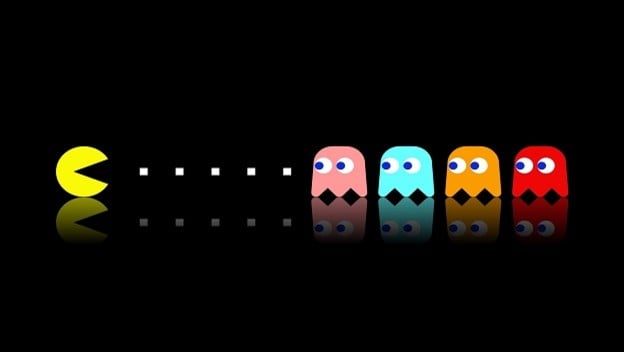Pac-Man. You know him, because of course you do; everybody is familiar with the little yellow dot that consumes smaller dots while on the run from ghosts. It didn’t have to make a whole lot of sense, it just had to be fun and, in a time where gaming was extremely limited by technology, it was certainly fun. Gaming was still a bit of a novelty in the 80s, and Pac-Man was as novel as it came. Cute, playful, and easy to understand. At this point, everybody is familiar enough with the character that references to him are strewn about popular culture. As iconic as he is, though, he is also equally emblematic of issues plaguing gaming; derivative works, cash-grabs, franchise fatigue and just pure laziness.
Pac-Man has one of the highest levels of brand awareness in gaming. In the 80s alone, the character had generated 2.5 billion dollars in revenue, mostly in quarters. It’s no wonder the character has been shoved down our throats for decades. He’s easy money.
Perhaps this is why Atari was so keen to procure a license to distribute the game on their home console in the early ’80s. They were so sure that people would buy Pac-Man that they rushed the release out to meet holiday demands. They over-ordered a couple million copies and also produced the unequivocally worst version of the game, having essentially just released the prototype. It was returned for refunds in droves.
Merchandising continued. They slapped a bow on the character, supposedly to make it appeal more to the female audience, even though the game wasn’t struggling by any means to appeal to both genders. Other companies tried to clone Pac-Man’s success. Eventually, Pac-Man was even given a personality, a Pac-Family and some sidescrolling games which, unsurprisingly, were poorly received and totally unnecessary.

Over the decades, the game was rarely innovated upon. The same formula seemed to work, and companies pushed to make the game available on their platform. Nintendo, however, did manage to reinvent the formula to an extent with their Gamecube version of the game, Pac-Man Vs. This title was an early example of Nintendo’s interests in multiple screen gameplay. Using a link cable and the gameboy advance, players were able to see the game from different perspectives, making it harder for the ghosts to find Pac-Man and challenging for the player to avoid the ghosts. It actually created a bit of anxiety that enhanced the gameplay. This asymmetric style of gameplay has since been reused on various Nintendo consoles. Sadly, nobody else followed suit, and Pac-Man games have stagnated since.
Pac-Man is just an early example of the problem, though. How many Call of Duty games do players really need before they’ve had enough? How many times does Activision need to release Guitar Hero and Tony Hawk: Pro Skater? Some developers are having massive success innovating. Hell, when Pac-Man was first released, the game pretty much created a genre. But why, after a huge innovation, do developers feel the need to coast on brand awareness? It’s easy money, sure, but is it good art? No. And, since we vote with our wallets, we’re just as responsible for creating the problem as they are when we pay for essentially the same game over and over.
I have to wonder, what other games might we have seen if the resources weren’t tied up in producing the same game for decades at a time?
